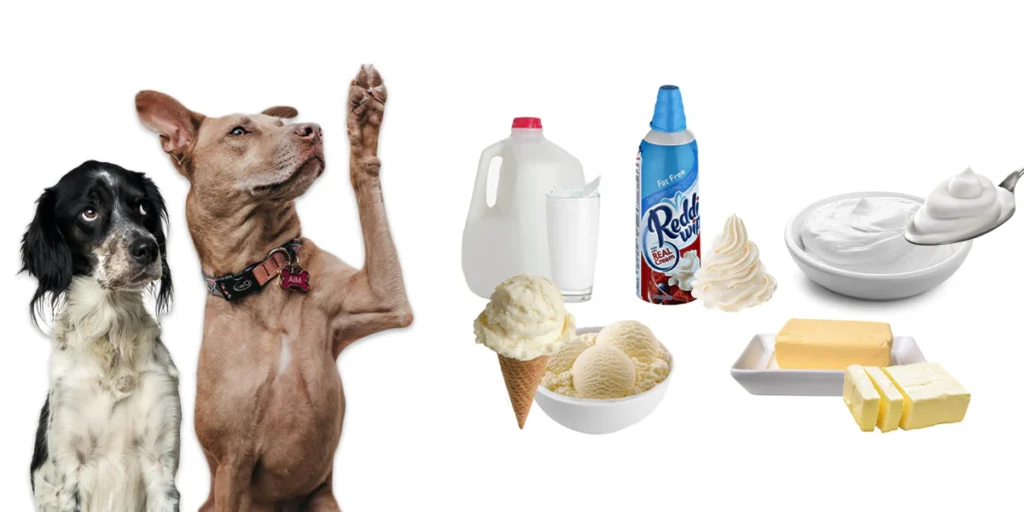If you’ve ever enjoyed a bowl of cereal or a cup of coffee with milk, you’ve probably encountered the stare—your dog watching you, eyes wide, tail wagging, hoping for a taste. But before you pour them a little milk, you might be wondering:
👉 Can dogs drink milk safely?
👉 Is milk good for dogs, or does it cause digestive issues?
👉 Are some types of milk better for dogs than others?
The answer isn’t as simple as yes or no. Some dogs can tolerate small amounts of milk, while others may experience digestive problems. It all depends on your dog’s tolerance, the type of milk, and the quantity.
In this guide, we’ll cover:
✔ Lactose intolerance in dogs
✔ Nutritional benefits vs. risks of milk
✔ Safe types of milk for dogs
✔ Alternatives to milk that dogs love
✔ How to tell if your dog can digest dairy
Let’s dive in!

1. Are Dogs Lactose Intolerant?
What Is Lactose Intolerance?
Lactose is a natural sugar found in milk and dairy products. To digest it properly, dogs need an enzyme called lactase, which breaks lactose down into simple sugars that their bodies can absorb.
🐶 Puppies Have Lactase – But Lose It Over Time
Puppies are born with high levels of lactase because they drink their mother’s milk. However, as they grow and transition to solid food, their bodies produce less lactase, making it harder for them to digest dairy.
🐶 Many Adult Dogs Are Lactose Intolerant
Once a dog reaches adulthood, their ability to process lactose varies. Some dogs retain enough lactase to digest small amounts of dairy, while others become lactose intolerant, experiencing digestive issues after drinking milk.
🚨 Signs Your Dog Might Be Lactose Intolerant
If your dog drinks milk and experiences any of these symptoms within 12 hours, they may be lactose intolerant:
✔ Diarrhea – Loose, watery stools
✔ Vomiting – Stomach upset or regurgitation
✔ Gas & Bloating – Excessive flatulence or a swollen belly
✔ Abdominal Discomfort – Restlessness, whining, or pawing at the stomach
👉 Bottom Line: Most adult dogs are lactose intolerant to some degree, so introducing milk should be done cautiously.

2. Is Milk Nutritionally Beneficial for Dogs?
Some people believe that since milk is a good source of calcium, it must be beneficial for a dog’s bones and teeth. However, dogs don’t need milk to get their required nutrients.
🐾 Dogs Are Not Designed to Digest Dairy Regularly
Dogs are omnivores, meaning their diet consists mainly of meat and plant-based foods. While they can digest small amounts of dairy, it isn’t a necessary or recommended part of their diet.
Nutritional Breakdown of Milk (Per Cup of Whole Milk)
✔ Calcium – Supports bone and teeth health
✔ Protein – Helps muscle growth and repair
✔ Fat – Provides energy but may cause weight gain if excessive
✔ Lactose – The sugar that many dogs struggle to digest
🚨 Why Milk May Be a Problem for Dogs
❌ Unnecessary Calories – Regular milk consumption can contribute to obesity.
❌ High-Fat Content – Some types of milk are high in fat, leading to pancreatitis or digestive upset.
❌ Not Essential – A balanced dog diet already contains calcium and protein, so milk isn’t needed.
👉 Final Verdict: While milk contains some beneficial nutrients, it does not provide any essential benefits that a well-balanced dog diet doesn’t already offer.

3. What Types of Milk Are Safe for Dogs?
If you want to offer your dog milk, certain types are safer than others.
✅ Safe in Small Amounts
✔ Low-Fat or Skim Cow’s Milk – Has less fat, but still contains lactose.
✔ Goat’s Milk – Contains less lactose and is easier for some dogs to digest.
✔ Lactose-Free Milk – A safer option for lactose-intolerant dogs.
✔ Plant-Based Milk (In Moderation!) – Some unsweetened nut and oat milks are safe (more below).
🚫 Milk to Avoid
❌ Whole Cow’s Milk – High in lactose and fat, making it hard to digest.
❌ Flavored or Sweetened Milk – Contains sugar, artificial sweeteners (xylitol), or chocolate, which are toxic to dogs.
❌ Cream or Whipping Cream – High in fat, which can lead to pancreatitis.
🚨 What About Almond, Soy, or Oat Milk?
These are not toxic, but they should be given in small amounts because they contain added sugars, flavors, and sometimes preservatives that aren’t good for dogs.

4. How to Introduce Milk to Your Dog Safely
If you still want to give your dog a little milk as an occasional treat, follow these steps:
🐾 Step 1: Start with a Small Amount
Give your dog just a teaspoon or two and monitor for any reactions.
🐾 Step 2: Watch for Digestive Symptoms
If your dog develops diarrhea, vomiting, or bloating within 12 hours, stop giving them milk.
🐾 Step 3: Limit Frequency
Even if your dog can tolerate milk, it should be an occasional treat—not a regular part of their diet.

5. When to Avoid Giving Milk to Your Dog
🚫 DO NOT Give Milk If Your Dog:
❌ Has Shown Signs of Lactose Intolerance – Don’t risk further digestive upset.
❌ Has a Sensitive Stomach – Some dogs have more delicate digestive systems.
❌ Is Overweight or Prone to Pancreatitis – Milk’s fat content can cause serious health issues.
❌ Has Food Allergies – Dairy is a common allergen in dogs.
👉 If you’re unsure, consult your vet before introducing milk into your dog’s diet.

6. What Are the Best Milk Alternatives for Dogs?
If your dog loves dairy but can’t tolerate milk, try these safer alternatives:
🐶 Plain Yogurt – Contains probiotics and less lactose than milk.
🐶 Cottage Cheese – Easier to digest due to lower lactose content.
🐶 Bone Broth – A nutritious and hydrating option.
🐶 Dog-Specific Dairy Treats – Some brands make lactose-free dairy treats for dogs.
🚨 Always choose plain, unsweetened varieties with no artificial additives!

Final Thoughts: Should You Give Milk to Your Dog?
❌ No, dogs don’t need milk as part of their diet. Most adult dogs are lactose intolerant, and milk can cause digestive issues.
✔ If your dog can tolerate small amounts, occasional milk isn’t harmful, but it shouldn’t replace water or a balanced diet.
🎯 Better Alternatives: Try plain yogurt, lactose-free milk, or bone broth instead!💬 What about your dog? Do they like milk? Have you ever noticed any digestive issues after giving dairy? Share your experience in the comments below!

